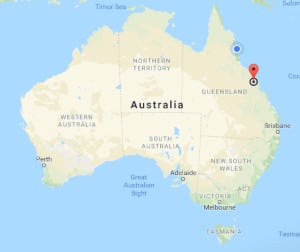Sooty Grunter


Dan Grech
Tournament Angler And Journalist
Dan is a well known identity throughout central Queensland, being something of a tournament barramundi and sooty grunter guru. In his 11 years of tournament angling he’s won the world sooty grunter championship three times has been ABT Angler Of The Year and has taken out a few ABT tournaments, won a couple of AFC tournaments and crushed the 2018 AFC Sooty Grunter Championship. Having fished Eungella for around 20 year, he’s imminently qualified to talk to ALF listeners about how best to target sooties in this storage.
Dan’s Top Tips For Eungella Sooty Grunter
- Sooties are aggressive fish. Usually if you put the right lure in front of their face they will eat it – and it doesn’t really matter what time of year, lunar cycle or weather conditions are at play.
- Sooty grunter fishing with poppers tends to work better that with walk the dog style lures. Poppers can be worked to throw water well forward while moving the lure very little, stickbaits require more forward movement to create action. It’s not unusual for the same fish to hit a popper 10 times or so before getting hooked, while stickbaits don’t get the same love.
- Lures need to be placed very close to structure and worked thoroughly through the strike zone. Once out of the zone, stop working them, crank them back and cast again.
- The easiest way to find sooty grunter is to figure out where the shags (cormorants) are roosting. Sooties will sit directly below and eat the cormorant droppings. Branches closer to the water tend to make for better fishing.
- The “Plonk” is a heavy lead weight on a length of rope used to hols a boat stationary without burning up the electric or dropping a noisy anchor and chain over the side. It’s perfect in that awkward depth of around 10ft or so and can be silently slipped into the water without spooking fish.
- Leave the barra lures at home. Sooties are aggressive, but even medium sized barra lures are too big and small lures (<60 mm)are definitely far more successful. Likewise, excessively noisy lures tend to be less effective than more subtle ones, especially during a competition.
- Most days there are three distinct bite windows: Early morning, midday and late afternoon. Mid morning and mid afternoon tend to be tougher, although you’ll still pick up the odd fish. Fish the shallower water during the low light periods, then head for deeper water around the middle of the day and fish submerged trees.
Dan’s Preferred Tackle For Sooty Grunter Fishing
- Dan prefers 4-6 kg line class baitcast gear for throwing most lures at Eungella sooties, typical Australian bass gear is fine. To reduce loss of expensive lipless crankbaits he uses heavier braid, around 20 lb and a 15-20 lb Suffix fluorocarbon leader.
- For throwing lighter lures such as plastics, very small poppers or small spinnerbaits Dan uses a 2-4 kg spin rod with 8 lb braid and a 10 lb fluorocarbon leader.
Dan’s Best Sooty Grunter Lures
- A 70mm Rapala X-Rap Pop is great because it can be popped quietly or can be made to make more noise, as required. Don’t work them all the way in, once they’re out of the zone, crank them straight back and cast again. These are best used around the shallow edges during the early morning ans late afternoon.
- A Team Daiwa TD Woofer Lipless Crankbait is deadly on sooty grunter, but is no longer made and is hard to find. It has a single knocker style rattle that makes a low pitch sound that annoys sooty grunter into biting when other, noisier, lures like the Jackalls are less effective. Rolling these through the tops of submerged trees is a good way to pick up some sooties.
- Spinnerbaits can be effective on sooty grunter and are great for fishing through shallow water and weedbeds because the upturned hook resists snagging. Dan uses Bassman Spinnerbaits because they come fitted with a trailer hook, which he finds essential for sooty grunter. Other brands can be used effectively if you fit a trailer retrospectively. Spinnerbaits have the disadvantage that fish will usually only hit them once and if a hook up doesn’t occur it will shy away from spinnerbaits after that first hit.
- The 4″ Berkley Gulp Nemesis is a soft plastic grub that’s effective when cast under shags and allowed to fall past the fish’s face. An advantage of the soft plastic is that it’s more subtle, so you can catch and release multiple fish from a single snag without the school wising up.
